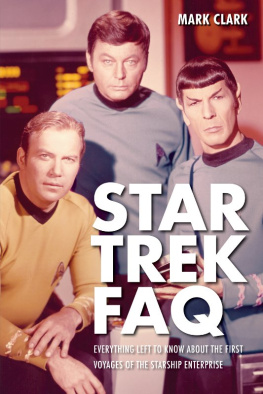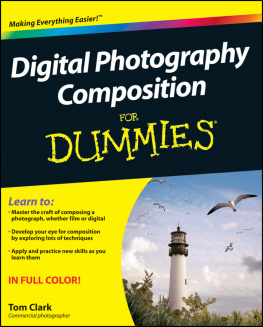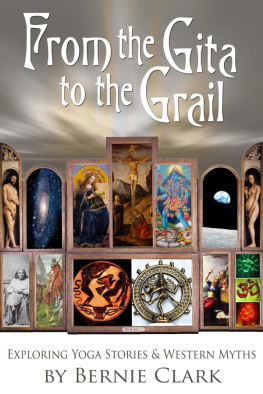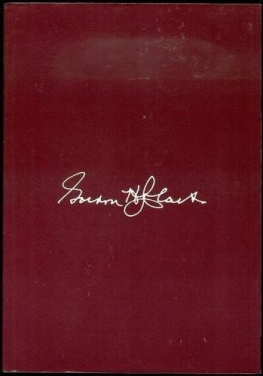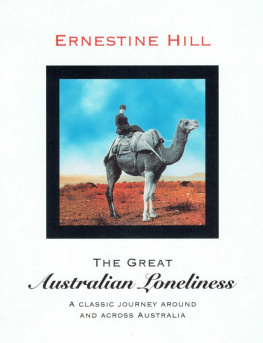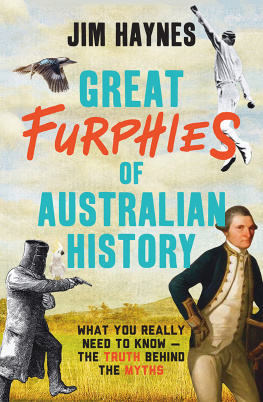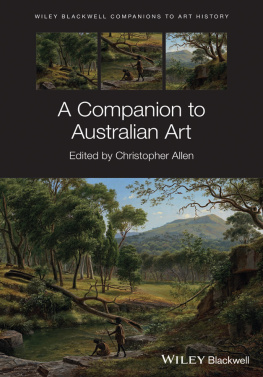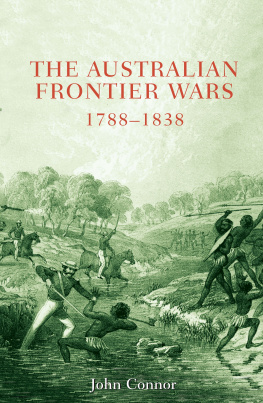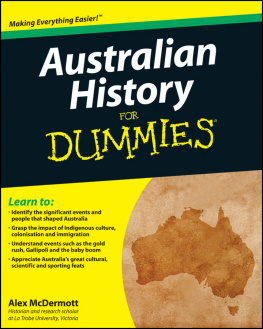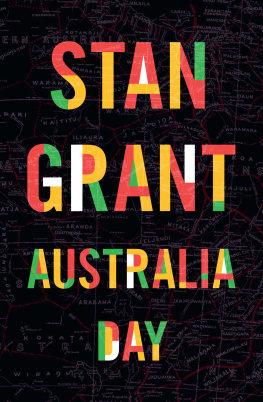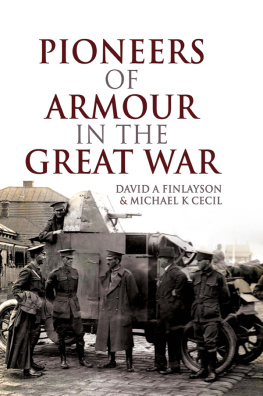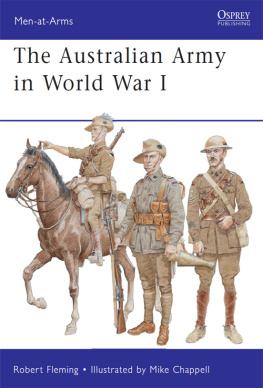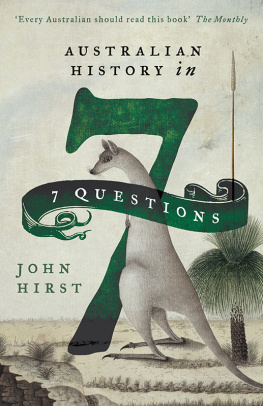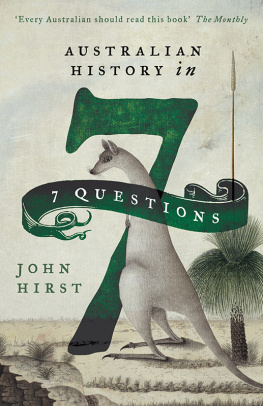A HISTORY OF AUSTRALIA
VOLUME II

THE YOUNG WENTWORTH
Drawing at Vaucluse House, Sydney
C. M. H. CLARK
A HISTORY OF AUSTRALIA
II
NEW SOUTH WALES AND
VAN DIEMENS LAND
18221838

MELBOURNE UNIVERSITY PRESS
First published 1968
Reprinted 1975, 1978, 1981, 1987, 1988, 1990, 1991
First paperback edition 1979
Reprinted 1987, 1997
Printed in Australia by Brown Prior Anderson Pty Ltd, Burwood, Victoria, for Melbourne University Press, Carlton, Victoria 3053
This book is copyright. Apart from any fair dealing for the purposes of private study, research, criticism or review, as permitted under the Copyright Act, no part may be reproduced by any process without written permission. Enquiries should be made to the publisher.
Charles Manning Hope Clark 1968
National Library of Australia Cataloguing in Publication data
Clark, Charles Manning Hope, 191591
A history of Australia 2.
Index.
ISBN 0 522 83821 9 (cloth)
ISBN 0 522 84166 X (paper)
ISBN 0 522 84235 6 (set)
I. Australia History 1822-1838. I. Title.
II. Title: New South Wales and Van Diemens Land.
994'.03
To
Keith Hancock and Max Crawford
Some men, like bats or owls, have better eyes for the darkness than for the light.
Charles Dickens: Pickwick Papers
The land, boys, we live in.
Anniversary Dinner, Sydney. 26 January 1825.
W. C. Wentworth, President.
PREFACE
THE FIRST VOLUME attempted to describe the coming of European civilization to Australia. This volume attempts to tell the storyor rather part of the story, for no man can hope to tell it allof what happened in New South Wales and Van Diemens Land in the years from the departure of Macquarie at the end of 1821 to 1838. The history of South Australia, Western Australia, Port Phillip and Moreton Bay, the events in the United Kingdom which affected the Australian colonies during these years, and surveys of land, immigration and education will be attempted in the third volume, which will end during the decade of gold.
The material for this volume has been collected in London, Dublin, Glasgow, Edinburgh, Auckland, Norfolk Island and in the public libraries of Australia. I would like to thank Dr Watson of the Department of History, Duke University, North Carolina, for making it possible for me to spend part of my time in their great university reading the London Times for 182138. I would like to thank Merval Hoare for her help in Norfolk Island, and Judith Egerton for her help in London. I would like to thank, too, Dr and Mrs Parnaby for helping me to see the Marsden country in New Zealand. I would also like to thank the Rector of Canisius College for permitting me to read the Therry Papers, and J. A. Dumaresq for allowing me to read the Dumaresq Papers at Mount Ireh. As before my great debt is to the National Library in Canberra, and in particular to the head of the Australian Section, Pauline Fanning, J. L. Cleland, and Jennifer Strickland in the Manuscript Section. My other great debt is to the Tasmanian State Archives, and their excellent staff, led by the late P. R. Eldershaw and G. T. Stilwell. It was also my great good fortune to have the help of A. J. and Nancy Gray, and Dr Charles Currey, all three of whom gave generously of what they knew. Simon Proctor drew my attention to much useful material. As before, too, there have been many people with whom it was useful to exchange ideas. Two men helped me more than I can say. They were Keith Hancock and Ken Inglis. Some found time to help me with their knowledge, and in other ways. They were Laurie Gardiner, Kathleen Fitzpatrick, Don Baker, Bruce Grant, James McAuley, Judah Waten, Noel McLachlan, Ian Turner, Sandy Yarwood, Allan Martin, Ann Moyal, Alison Priestley, Bede Nairn, Macmahon Ball, Daphne Gollan, David Campbell, Keith Sinclair and Michael Roe. I was lucky also to have at different times three excellent helpersBarbara Penny, Rima Rossall, and Lyndall Ryan. Pat Romans typed the manuscript with great efficiency. I am grateful to the Trustees of Vaucluse House for permission to reproduce the pen and ink drawing of W. C. Wentworth, and to Lady Stanham for permitting me to reproduce the portrait of James Macarthur. I would like to thank the Trustees of the Public Library of New South Wales for allowing me to use the illustrations of Gellibrand, Truganini and Mannalargenna, Robinson, Forbes, Lang, McLeay, Bourke and Vaucluse; the National Library for permission to reproduce the portrait of Arthur; and the National Portrait Gallery, London, for permission to reproduce the portrait of Molesworth. And I would like to thank H. Hennig of the Bureau of Mineral Resources for drawing the maps. It has been my great good fortune to have the help of Dymphna Clark and the staff of the Melbourne University Press in editing the manuscript; to both my debt is greater than would suit a man to say. The students at the Australian National University helped me to believe one ought to try to tell the story of how we became what we areeven though no matter how much one gave to it, that story never could be told as it ought to be, and, indeed deserves to be, by anyone.
M. C.
CONTENTS
ILLUSTRATIONS
PLATES
MAPS
ABBREVIATIONS
C.M.S. | Church Missionary Society |
C.O. | Colonial Office |
C.S.O. | Colonial Secretarys Office (Hobart, Tasmania) |
Encl. | Enclosure |
H.R.A. | Historical Records of Australia |
H.R.N.S.W. | Historical Records of New South Wales |
Hist. Studies | Historical Studies, Australia and New Zealand |
M.L. | Mitchell Library, Sydney |
MS. | manuscript |
n.d. | no date |
N.S.W.S.A. | New South Wales State Archives |
NAT. L. | National Library of Australia, Canberra |
P.D. | British Parliamentary Debates |
P.P. | British Parliamentary Papers |
R.A.H.S., J. & P. | Royal Australian Historical Society, Journal and Proceedings |
S.P.G. | Society for the Propagation of the Gospel |
T.H.R.A., P. & P. | Tasmanian Historical Research Association, Papers and Proceedings |
T.S.A. | Tasmanian State Archives |
V. & P. (L.C. N.S.W.) | Votes and Proceedings of the Legislative Council of New South Wales |
1
DARKNESS
SOME WHO CAME to mans estate in the cities and country districts of the British Isles in the decade between 1820 and 1830 who knew the defeat of good, the success of evil, the physical pain and the mental anguish considered that the human race was out of joint with the purpose of its creator. From the East End of the great city of London right to the outskirts of Westminster, unwashed, unshaven, squalid and dirty men constantly raced to and fro ankle deep in the filth and mire.
Next page


